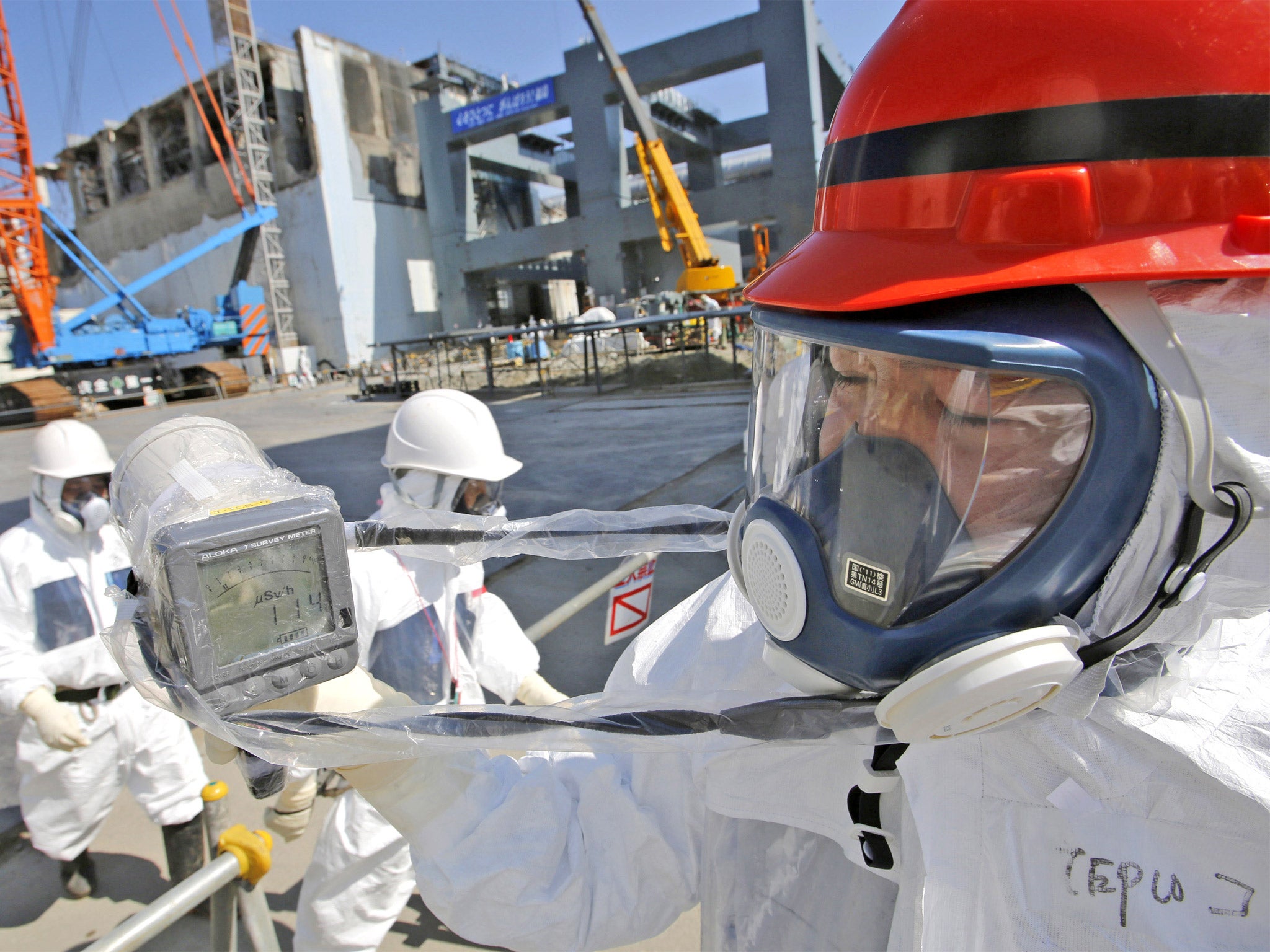Two years on the deadly battle to save Fukushima from an invisible, odourless enemy goes on
It will take another 40 years to clean up the site of the 2011 nuclear disaster. David McNeill reports on the progress so far

It is a battle waged with robots, state-of-the-art engineering and some of the most advanced filtering equipment on the planet, and by the time it is finished, the world will be half way through the 21st century. But the men in charge of cleaning up after the Fukushima nuclear disaster – the worst since Chernobyl – have insisted that it is all going according to plan.
During a rare tour through the radioactive carcass of the Daiichi nuclear plant, journalists were told that the removal of thousands of highly radioactive fuel rods is “progressing.” But the cleanup, two years after the plant was pummeled by a huge earthquake and tsunami, is plagued by a buildup of irradiated water that is increasing so fast operator Tokyo Electric Power (Tepco) is running out of space to store it.
Radiation in some areas of the plant are still too high to allow work – the level outside Unit 3 is 1,710 microsieverts an hour, enough to quickly induce radiation sickness. Tepco is reportedly struggling to find people willing to work at the plant. And engineers can still only estimate the precise location of the nuclear fuel that melted through the containment vessels of three reactors.
“Even though we are still faced with difficult tasks, we will steadily push… toward decommissioning,“ said plant manager Takeshi Takahashi, who apologised “to people all over the world for the concern that we have caused at the Daiichi plant.” Mr Takahashi predicted that safely dismantling the six-reactor facility would take up to 40 years.
“Radiation levels at units one, two and three are very high and the cause of that is the fuel that has melted inside the reactors,” he said. “Radiation levels within the buildings are all very high, although the level at Unit 4 is lower.” He insisted that the ruined No. 4 reactor building, containing 1,530 hugely toxic fuel rods, would withstand another earthquake, despite doomsday predictions by some.
Ron Wyden, a Democratic senator from the US state of Oregon, warned last year after visiting the plant that another quake could destroy the reactor 4 building, triggering an even worse radioactive leak than two years ago. Mitsuhei Murata, a former ambassador to Switzerland, was even more blunt, saying another seismic accident in Unit 4 could be a “catastrophe for the world.”
“I don’t know why this is not being discussed in Japan,” he said.
Mr Takahashi insisted today, however, that the unit’s fuel cooling pool has been reinforced and could resist a quake equivalent to the one that struck on 11 March 2011. Reporters were shown a huge steel structure under construction right next to Unit 4. Engineers explained it will eventually be fitted with a giant crane to lift out the spent fuel rods stored in the top of the Unit 4 building. Mr Takahashi said the fuel removal would begin in November.
The twisted steel frame of Unit 3, now partially covered with huge gray steel panels, is still visible from the hydrogen explosion that ripped the building apart. Two large unmanned cranes stand next to the unit, clearing up the debris on the top floor, where some 500 spent fuel rods are kept in a pool. Another 6,300 fuel rods are stored in a common pool nearby.
“When I came first on the 16th of March my family were a bit worried,” said Jun Hirayama, a 43-year-old construction site manager. “But I explained the situation to them and they felt relieved. Hirayama said he chose to work at the Fukushima site himself. “I don’t have any problems working in this environment,” he said. Hirayama is leaving his post next month, not he insisted because of his dose level, which he said is still below the Japan limit of 100 milisieverts over 5 years.
"Radiation has no colour or smell and if you work in that environment for a while you get used to it and you're not afraid any more,“ admitted Hiroshige Kobayashi, 45, the head of the construction office at the plant for contractor Kajima Corp. "That's a psychological thing among the workers here, but we constantly try to remind them that there is a threat to their health, to enhance their awareness.”
Daiichi’s nuclear fuel is kept cool by thousands of gallons of water pumped every day but which engineers are struggling to decontaminate. Over 930 water tanks, each holding 1000 tons, have mushroomed at the plant. Engineers said a single tank fills once every two and a half days. A huge structure with lines of Toshiba-designed filtering equipment labours to remove 62 different types of radioactive materials from the water.
Outside the plant, in the towns and villages that evacuated in March 2011, life has frozen in time. Police barricades prevent all but authorised people from entering the 20-km contaminated zone. The sea is still too contaminated to safely fish so hundreds of local fishermen are idle. Over 160,000 former residents are still battling for compensation. “Our aim is to return this place to how it was before so that the local residents can come back to their homes,” Kobayashi said.
Join our commenting forum
Join thought-provoking conversations, follow other Independent readers and see their replies
Comments